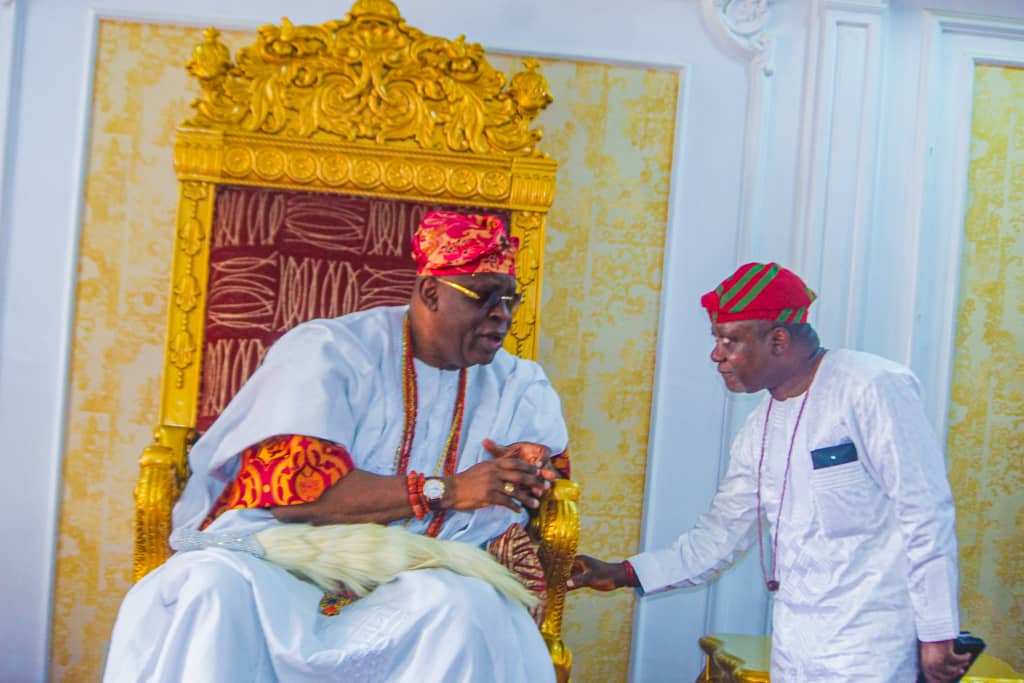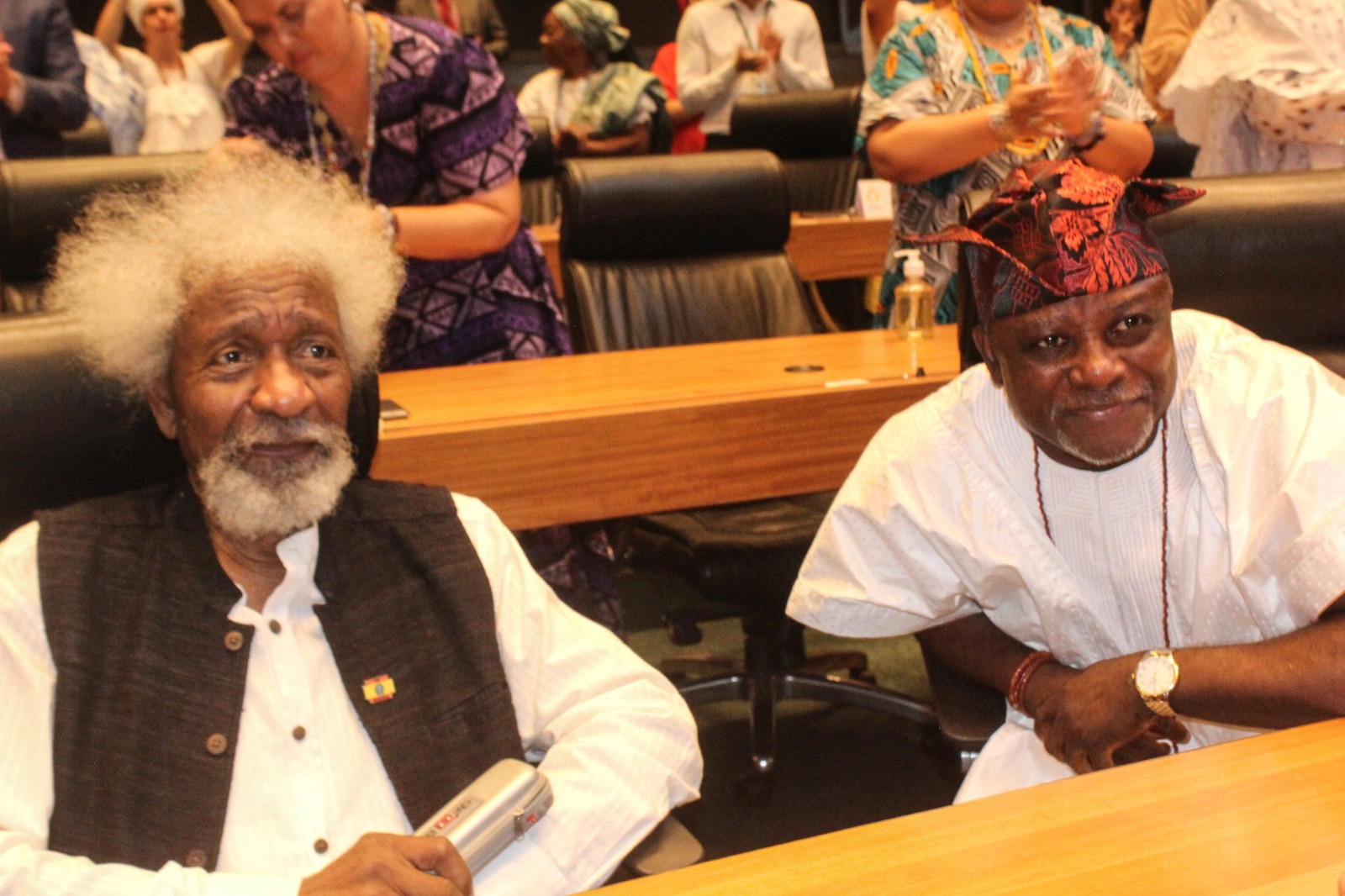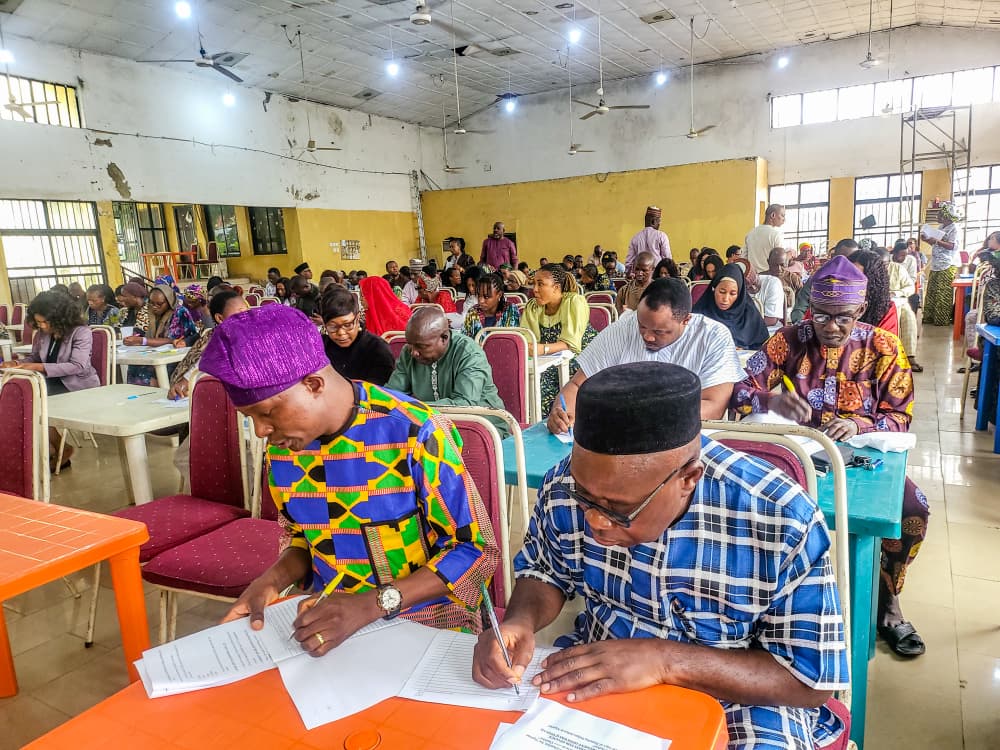 What have you believed about Egungun? That they are masquerades or mere symbolic manifestations of the ancestors or spirits? Or men and boys dressed up in elaborate cloth and raffia costumes and dance, jeer, or joke depending on who they are manifesting?
What have you believed about Egungun? That they are masquerades or mere symbolic manifestations of the ancestors or spirits? Or men and boys dressed up in elaborate cloth and raffia costumes and dance, jeer, or joke depending on who they are manifesting?
Up to now, you must have believed masquerades to be nothing more than myth, folklore and tradition. It will shock you to know that true masquerades are always dangerous. They can kill, steal your soul, take your mind, take your past, rewrite your future, and bring the end of the world even. But, the most interesting thing is that they are an important and crucial part of the Yoruba history and a spectacle to behold in our lifetime.
In Nigeria, there is a story for everything. Among oral traditions in the Yoruba tribe, there are lots of stories about Egungun cult and how it sprouted up among the Yoruba race. Whether it is true or not, it is an interesting tale.
Egungun is a deity with a colourful view; it is one of the greatest divinities in the land of Yoruba. According to the myth, Egungun became a known deity in two different ways. One of it will be discussed today. In the beginning, Egungun was among the great divinities (Irunmoles) that came directly from the heaven beyond.
The history made us aware that there once lived a great man whose name was called, Lapanpa, he was the one that started the cult of EGUNGUN. According to an ‘Ifa’ verse, God gave Lapanpa, Egungun to bring to the physical world but it looked like a Shea-butter. The sun’s heat began melting the Shea-butter brought by Lapanpa. He thought of what he could do to protect the Shea-butter from melting away, he later hid the remaining ORI (Shea- butter) in his mouth to prevent it from total melting and wasting away.
On getting to the physical plain of existence, he wanted to utter some words, saying, “MO TI DE,” translating, “I have come,” before he could utter such powerful words, his voice changed because the Shea-butter had melted and slipped into his throat. His voice changed and resembled not the voice of his contemporaries. He was ashamed of his voice, his character and his life. He was planning what to do to prevent the shame. He decided to cover his own head with cloth. Whenever he wanted to speak out, he noticed a strange voice, completely different from the normal voice of his generation of his days, thus, people became exceedingly gripped with fear. People started to revere him that consequently resulted into “EGUNGUN CULT,” which means oracle from heaven or deity from unknown that represent spiritual past of the people.
In the broadest sense of the word, Egungun, refers to all types of Yoruba masquerades or masked, costumed figure. This same word, however, when used in its more specific, common sense, refers to the Yoruba masquerades connected with ancestor worship.
EGUNGUN really means, “bone;” hence, “skeleton,” and Egungun himself is supposed to be a man raised from the dead. The part is acted by a man disguised in a long robe, usually made of grass, and a mask of wood, which generally represents a hideous human face, with a long pointed nose and thin lips, but sometimes the head of an animal.
Egungun appears in the streets by day or night indifferently, leaping, dancing, or walking grotesquely, and uttering loud cries. He is supposed to have returned from the land of the dead in order to ascertain what is going on in the land of the living, and his function is to carry away those persons who are troublesome to their neighbours. He may thus be considered a kind of supernatural inquisitor who appears from time to time to inquire into the general domestic conduct of people, particularly of women, and to punish misdeeds. Although it is very well known that Egungun is only a disguised man, yet it is popularly believed that to touch him, even by accident, causes death.
In community settings, Egungun priests and initiates that are trained in ancestral communication, ancestral elevation work and funeral rites are placed in charge of invoking and bringing out the ancestors. Elaborate costumes adorn the Egungun masqueraders (dancers), and through drumming and dance, these dancers become possessed with the spirits of the ancestors. The Egungun then spiritually clean the community and through exaggerated acting/miming, demonstrate both ethical and moral behaviour that occurred since their last visit, exposing the strengths and weaknesses of a community with hopes of encouraging behaviour more befitting of their descendants. Once this occurs, messages, warnings and blessings are doled out to spectators.
A crowd always stands round watching, at a respectful distance, the gambols of an Egungun, and one of the chief amusements of the performer is to rush suddenly towards the spectators, who fly before him in every direction in great disorder, to avoid the fatal touch. To raise the hand against Egungun is punished with death, and women are forbidden, on pain of death, to laugh at him, speak disparagingly of him, or say he is not one who has risen from the dead. “May Egungun cut you in pieces,” is an imprecation often heard.
Egungun is thus at the present day a sort of “bogey,” or make-believe demon, whose chief business is to frighten termagants, busybodies, scandalmongers, and others, but it seems probable that originally he was regarded as the incarnation of the dead, and that the whole custom is connected with manes-worship. In June there is an annual feast for Egungun lasting seven days, during which lamentations are made for those who have died within the last few years. It is a kind of All-Souls festival, and resembles the Affirah-bi festival of the Tshi tribes. Moreover, Egungun also appears in connection with funeral ceremonies. A few days after the funeral an Egungun, accompanied by masked and disguised men, parades the streets of the town at night, and, as in the Roman conclaination, calls upon the deceased loudly by name.
A superstitious and half-frightened crowd follows, listening for any response that may be given to the weird cries of the Egungun. A few days later the Egungun, again accompanied by several followers, proceeds to the house in which the death took place, and brings to the relatives news of the deceased, usually that he has arrived in Dead land safely, and is quite well. In return for the good news the family set food, rum, and palm-wine in a room of the house, and inviting the Egungun to partake of it, themselves retire, for to see Egungun eating is death.
When Egungun and his followers have consumed everything loud groans are heard to issue from the room, and, this being a sign that be is about to depart, the family re-enter and entrust him with messages for the deceased.
Some Important Egungun includes the Oloolu and Alapansanpa, both of Ibadan land. Elewe of the Ìgbómìnà Yoruba clan, which is common in the towns of Òkè-Ìlá Òràngún, Ìlá Òràngún, and Arandun, is also of particular prominence. In Brazil, the main cult of the Egungun is found on the island of Itaparica, in the State of Bahia.
Cloth plays an important role in the world of the Yoruba. Their myths equate nakedness with infancy, insanity, or the lack of social responsibility. More elaborate dress reflects social power and prestige. In performances honouring ancestors, exquisite cloth is the major medium for the masker’s transformation. An Egungun costume is composed of multiple layers of cloth lappets made from ex
pensive and prestigious textiles, expressing the wealth and status of a family as well as the power of the ancestor.
The composition of an Egungun ensemble has several distinctive features. The layer worn closest to the masker’s skin, the under sack, must be made of aso oke, the indigo and white strip-cloth. It closely resembles the shroud in which the dead are wrapped. This sack, along with the netting for the face and hands, must completely seal the masker’s body. The netting effectively disguises facial and hand features that might disclose his identity.
On top of this base are placed the layers of lappets. As the masker whirls, the lappets are sent flying, creating a “breeze of blessing.” To make the costume beautiful, and thus powerful, the lappets are decorated with patchwork patterns, braids, sequins, tassels, and amulets. The amulets hold medicinal preparations which have performative power (ase), providing protection against enemies at a time when the transformed person is vulnerable. The main protective amulets, however, are on the inside of the costume, not the outside.
An ensemble is repaired and refurbished for use year after year, with layers of new lappets and amulets added to express remembrance and honour. Through divination, however, an ancestor might request a new costume altogether. The owner and the patron, the priest of divination, the tailor, the herbalist who prepares the packets of medicines, and the entire lineage collaborate in creating the ensemble. Depending upon its wealth, a family may own several types of Egungun costumes, which may represent specific or collective ancestors of the lineage.
The Egungun ensemble acts as the medium for the masker’s transformation into his ancestors. An Egungun society is composed of men and women whose lineages have the right to present the masquerade. Men do the masking. Women never wear the costume, although they participate in the chorus that sings the oriki (praise poems) and histories of the families. Elder women of high title also perform invocations, prayers, and offerings. At annual festivals, each of the numerous lineages is given a separate day to perform. The masker is kept at a distance from the surrounding crowd with the help of attendants dressed in masquerade costumes of different types. After all the Egungun have danced, the ensembles are stored until the next performance.
Egungun represent in reality ancestral divinities that shows the belief of ‘Ifa’ devotee in the life after death and the resurrection of every soul in the universe. The remembrance signifies that every soul in the universe must ensure that he works towards making a universe, most especially the physical world a place of learning , and for the redemption of soul to attract the wisdom and light of ‘Oduduwa’ – the vibration from ‘Olodumare,’ God.
When next the Egungun makes a rush towards you, flee from him to escape his touch. Do not doubt the power of culture, for they are spirits that we can see.
Culled from: http://dailytimes.com.ng/article/egungun-seen-spirits


